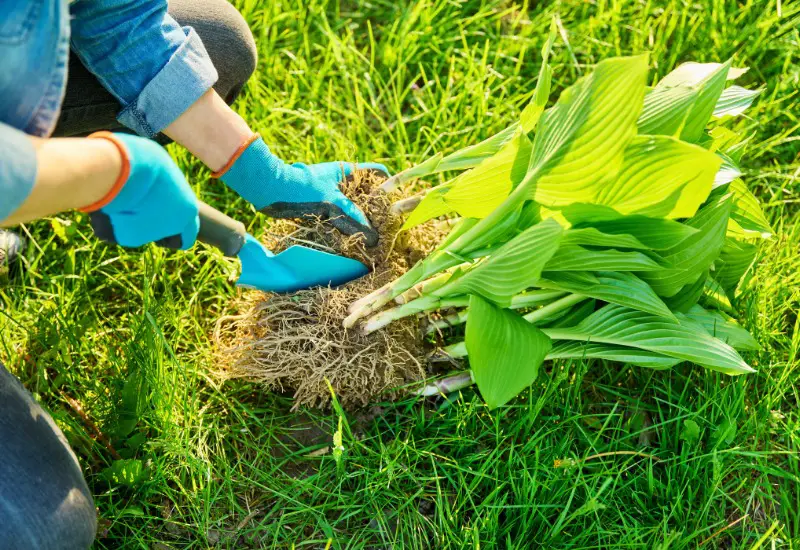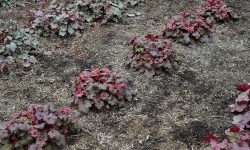Hostas are beloved perennial plants prized for their lush foliage, shade tolerance, and ability to thrive in various garden environments. As hostas mature, they often become crowded and less vigorous. To rejuvenate your plants and ensure healthy growth, dividing hostas is an essential gardening task.
Knowing how to divide a hosta in spring or fall can make a significant difference in their development, leading to more vibrant leaves, robust root systems, and increased flowering. This guide explores every step of dividing hostas for optimal results, regardless of the season.
Understanding Why and When to Divide Hostas

The Importance of Division for Healthy Hostas
Dividing a hosta isn’t merely about propagation—it’s a strategy for long-term health and garden beauty. As hostas grow older, the centers may die out or produce fewer leaves. This decline often results from overcrowding in the root zone, which limits access to nutrients and water. Division revitalizes the plant by reducing competition within the clump, encouraging new shoots and fuller foliage. It also provides an opportunity to control plant size, rearrange garden layouts, and prevent root rot caused by poor airflow.
Choosing Between Spring and Fall Division
Both spring and fall are ideal times to divide hostas, but each season has specific advantages. In spring, division can coincide with the hosta’s natural growth cycle, when the plant is emerging from dormancy. This allows the roots to reestablish before the heat of summer. In contrast, fall division occurs when the plant is preparing to go dormant. Dividing at this time reduces transplant shock, and the cooler temperatures are less stressful on new root systems. Understanding the benefits of each season helps you plan the most effective division schedule for your garden.
Preparing to Divide Hostas Effectively
Identifying the Right Hostas to Divide
Not every hosta in your garden will need division at the same time. Mature hostas typically require dividing every three to five years, depending on the variety and growing conditions. Signs that a hosta needs dividing include a doughnut-shaped clump, decreased vigor, or a congested center with sparse leaves. The ideal candidate for division is a healthy, established plant that has outgrown its space or is showing signs of stagnation.
Preparing the Plant and Garden Site
Before digging up a hosta, water it thoroughly the day before to reduce stress and make root separation easier. Prepare the new planting site ahead of time by loosening the soil and enriching it with compost or aged organic matter. This ensures that once the divisions are replanted, they will have a nutrient-rich environment to grow in. Having sharp tools, such as a spade, garden fork, and clean knife, ready will streamline the process and reduce damage to the roots.
Dividing Hostas in Spring for a Strong Start
Timing Your Spring Division for Best Results
In spring, hostas should be divided just as the shoots, or “eyes,” begin to emerge from the soil. This stage is ideal because the plant is not yet fully leafed out, which minimizes disturbance and allows the divisions to settle quickly. Avoid waiting until the leaves are large, as this makes handling the plant more difficult and increases the chance of damage.
Digging Up and Separating the Clump
Start by carefully digging around the base of the hosta, creating a wide enough circle to capture the majority of the root system. Gently lift the entire clump from the ground, taking care to keep the roots intact. Once out of the soil, shake or rinse off excess dirt to reveal the root structure and eyes. Using your hands or a clean knife, split the clump into sections, ensuring each division has at least one eye and a healthy portion of roots. The number of eyes per division will determine how quickly the plant reestablishes and how large it grows in its first season.
Replanting and Watering for Success
Place each division in its prepared hole with the crown level at the soil surface. Firm the soil gently around the roots and water deeply to eliminate air pockets and promote root contact with the surrounding soil. Adding mulch around the base helps retain moisture and suppress weeds. During the first few weeks, keep the soil consistently moist to support recovery and new root growth.
Dividing Hostas in Fall for Long-Term Resilience
Recognizing the Right Time in Fall
Fall division is best performed about four to six weeks before the first expected frost. During this time, the plant is naturally slowing down, and the weather is cooler, reducing stress. The foliage may begin to yellow or die back, signaling that the plant is ready for division. Cutting back the leaves before digging makes the process cleaner and allows more energy to be directed to root establishment.
Handling and Dividing the Root Mass
As with spring division, dig a wide circle around the plant and lift it from the ground with care. After removing excess soil, examine the roots and look for natural dividing lines. Use your hands or a sharp, sterilized tool to split the clump into smaller sections. Fall divisions do not need to be as large as spring divisions, as the plant will have the winter dormancy period to rest and prepare for the next season’s growth.
Replanting and Overwintering the Divisions
After placing the divisions into new planting holes, water them thoroughly and apply a thick mulch layer to protect the roots from winter temperature fluctuations. While the foliage won’t regenerate until spring, the roots will begin to settle and form new connections within the soil. Monitoring moisture during dry fall weather is important, but overwatering should be avoided to prevent rot.
Common Mistakes to Avoid When Dividing Hostas
Dividing Too Early or Too Late
Timing is critical in both spring and fall. Dividing too early in spring, before the soil has warmed, can lead to slow root development, while dividing too late in fall may not allow enough time for the roots to establish. Sticking to the proper seasonal windows is essential for long-term plant health and survival.
Damaging Roots or Ignoring Sanitation
Rough handling during division can tear or crush delicate roots, slowing down recovery. It’s also important to sterilize tools between cuts to prevent the spread of disease or pathogens. Clean cuts promote faster healing and reduce the risk of infection.
Skipping Soil Preparation or Post-Planting Care
Neglecting to prepare the soil properly or forgetting to water after planting can significantly reduce the success rate of your divisions. Compost, mulch, and consistent watering provide the best environment for newly divided hostas to thrive. Hostas are hardy plants, but they still require attention during their establishment phase to perform well.
Encouraging Maximum Growth After Division
Feeding and Mulching for Vigorous Growth
Once your divisions have been replanted, feeding them with a balanced, slow-release fertilizer in spring helps jumpstart leaf development. Avoid over-fertilizing, as this can encourage weak, leggy growth. A two- to three-inch layer of organic mulch conserves moisture and gradually enriches the soil, creating optimal conditions for strong root expansion.
Managing Pests and Environmental Stress
Divided hostas may be more vulnerable to pests such as slugs, especially when foliage is still tender. Monitoring for damage and applying natural deterrents or slug traps helps keep new growth safe. Additionally, ensure that divisions are protected from heavy foot traffic, extreme heat, or drying winds while they’re settling in.
Monitoring Long-Term Growth and Performance
Over the following growing seasons, observe how your divided hostas perform. Healthy divisions will gradually increase in size, fill in gaps in your garden, and display more vibrant foliage. If a division fails to thrive, consider checking soil drainage, sunlight exposure, or signs of disease. With proper care, divided hostas can flourish for many years without needing to be disturbed again.
Propagating Hostas Through Division for New Garden Designs
Expanding Your Garden Without Buying New Plants
Dividing hostas is one of the most economical ways to expand your garden or share plants with friends and neighbors. Each division becomes an independent plant, allowing you to redesign beds, fill in empty spaces, or create symmetrical arrangements using identical varieties. Over time, a single hosta can become the foundation for an entire shade garden.
Mixing and Matching Varieties for Visual Impact
When dividing hostas, gardeners often take the opportunity to combine different cultivars for textural and color variety. Combining blue-leaf hostas with green or variegated types adds depth and contrast to shaded areas. Since each division retains the characteristics of the parent plant, you can ensure continuity in form and habit across your design.
Creating a Legacy of Lush Growth
For gardeners who have nurtured their hostas for years, dividing and replanting them is a way to preserve and multiply that legacy. Passing along divisions to family members or planting them in new locations connects generations of gardeners and continues the tradition of lush, shade-loving beauty.
FAQ About How to Divide a Hosta in Spring or Fall
When is the best time of year to divide a hosta?
The best times are early spring when shoots are just emerging or early fall several weeks before the first frost. Both seasons provide cool temperatures and time for root establishment.
How do I know if my hosta needs dividing?
Signs include a declining center, reduced vigor, fewer leaves, or overcrowding. Hostas generally benefit from division every three to five years depending on growth rate.
Can I divide a hosta while it’s actively growing?
It’s possible, but not ideal. Dividing during summer stresses the plant, especially in hot or dry conditions. Stick to spring or fall for the highest success rates and healthiest plants.
Conclusion
Knowing how to divide a hosta in spring or fall for maximum growth empowers gardeners to maintain healthy, beautiful plants year after year. Whether you’re rejuvenating an old clump, filling a new garden bed, or simply sharing with others, hosta division is a straightforward yet powerful gardening practice. By choosing the right season, preparing carefully, and following through with attentive care, you’ll ensure your hostas thrive with renewed vigor and lush foliage that enhances your outdoor space season after season.






